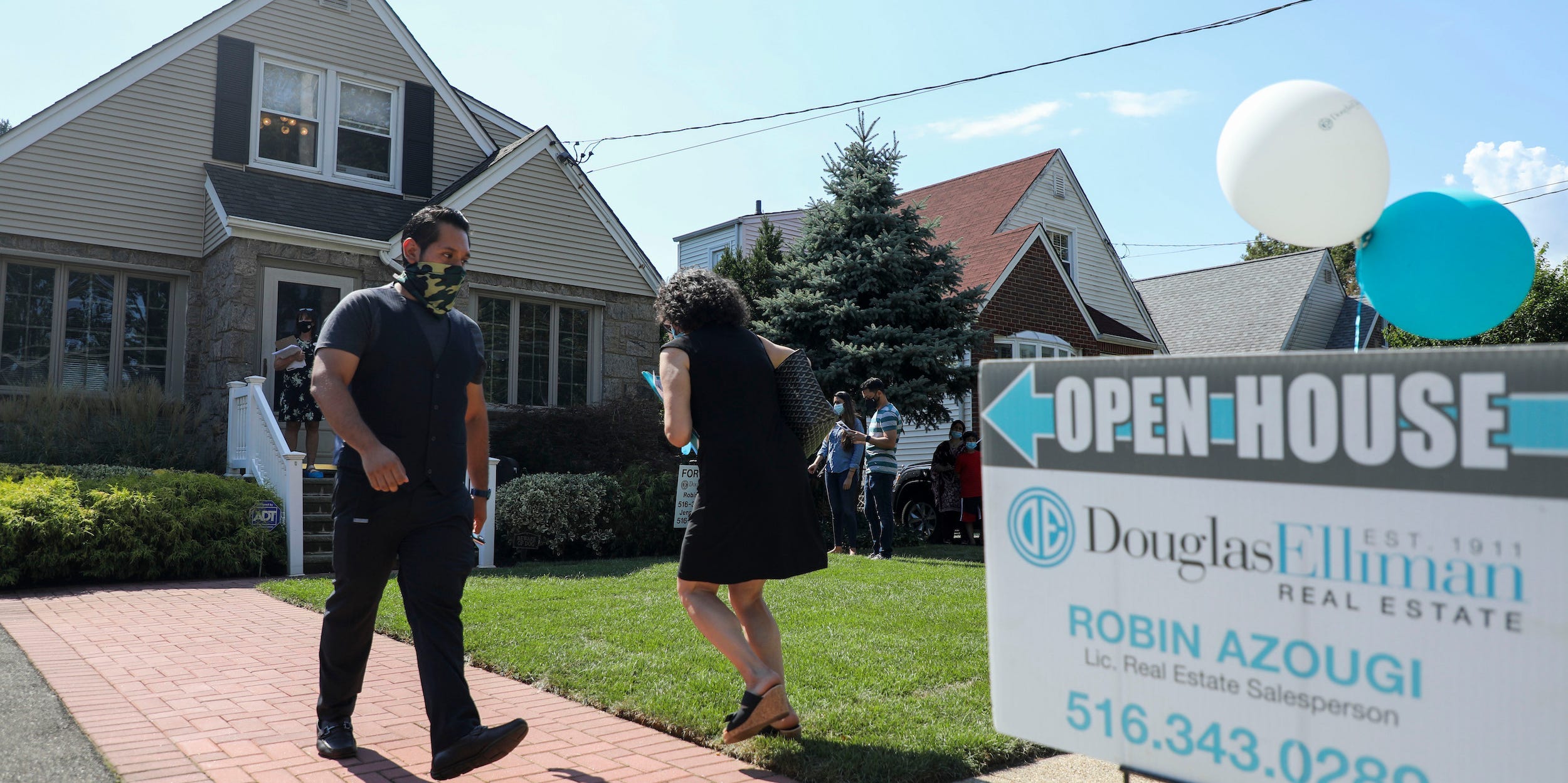
Wang Ying/Xinhua/Getty
- Prospective homebuyers will face low supply and high prices for at least another year.
- The US doesn't have enough homes to meet demand, and builders are struggling to keep up.
- Economists see price growth cooling in 2022, but only if construction picks up and demand holds steady.
- See more stories on Insider's business page.
America is still in a seller's market when it comes to housing, and could stay there until next year.
Prices are climbing at the fastest pace in more than three decades, and homes are frequently selling above their list price, according to the National Association of Realtors. In May, the average listing was only on the market for 17 days, said Logan Mohtashami, lead analyst at Housing Wire. For it to become a buyer's market, "For Sale" signs need to stay up for at least 30 days, Mohtashami said.
Unless construction picks up, the near-term outlook for prices isn't promising.
Economists interviewed by Insider said price growth will remain elevated through the rest of the year and into 2022 because millennials will keep demand high – and they see the construction industry having a hard time keeping up.
Millennials are hitting peak homebuying age
In his best-case scenario, Mohtashami sees price growth cooling and supply bouncing back in 2022. But demographics complicate the outlook and could keep demand high. The surge of first-time buyers is going to be "historic," Mohtashami said.
However, if millennial demand falls short, it could be a sign of an even larger issue. The generation's homebuying prospects were already hammered by the Great Recession, Insider's Hillary Hoffower reported. With the pandemic sending prices through the roof, the generation could become trapped in a vicious cycle of only renting and never having a home of their own.
"A lot of those buyers are among those for whom cost is prohibitive," Nancy Vanden Houten, lead economist at Oxford Economics, said. "They haven't bought a first home, or they're paying a high rent so it's hard to accumulate a down payment. They may also have other debts, including student debt."
Fallout from the late-2000s housing bubble looms large
Ali Wolf, chief economist at Zonda, said more new homes should become available over the next two years, but for now, contractors are lagging.
"Builders didn't know 2020 and 2021 were going to be some of the best years in the housing market ever," she told Insider. "They would have needed to plan for this kind of growth in 2019. They didn't."
The shortage isn't a completely new phenomenon. Home construction fell short for two decades, leaving the market with a deficit of up to 6.8 million units, according to NAR research.
Contractors "got burned" after the late-2000s bubble burst as homes away from city centers hurt their books, Zonda's Wolf said. That damage is still top of mind and will probably hold supply back for years to come, Wolf said.
"I suspect we will continue to underbuild for years, because that deep demand pool further away from central business districts will start to shrink back to what the norm was," she added.
Others are more optimistic. The severity of the nationwide housing shortage has captured the government's attention. Federal and state policymakers are "more aware" of the years-long problem and its effect on inequality, Gay Cororaton, director of housing and commercial research at NAR, told Insider. That awareness could lead to zoning laws, apprenticeship programs, and funding to aid builders and boost supply, she added.
"The lack of housing is a crisis. It's something that needs to be addressed, it just can't go on," Cororaton said. "It's causing that divide between those who have and those who have not."

